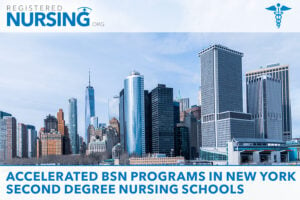The (Not So) Great Escape: Why New Nurses are Leaving the Profession

Nursing is a calling. The average registered nurse spends 4 years after high school completing grueling and competitive pre-nursing courses such as chemistry, biology, math, physiology, and human development, just to jump into what has been described as the “most challenging” undergraduate degree. Then, and only then, are those that survive qualified to sit for a national exam (with an 85% pass rate) to proudly earn the title of Registered Nurse. Only a calling to serve those in need would motivate and inspire someone to work so hard. So, why are many nurses leaving the profession within 2 years of this immense achievement?
The Environment
The essence of the nursing role has never changed: nurses provide care to enhance a patient's quality of life, partner with interdisciplinary professionals to create and implement the best care plan, and advocate for the health and wellness of patients and the community. What has changed significantly in the past 20 years is the environment in which nurses are expected to carry out their role. The Affordable Care Act has enabled more patients to access care, many for the first time in years. Additionally, states such as California took the opportunity to significantly change the parameters to meet the low-income Medicaid threshold, which added thousands of patients to the already full healthcare rosters. This translates to not just an increase in volume, but an influx of patients with co-morbidities such as obesity and diabetes.
RELATED: The States with the Largest Nursing Shortages
The First Year is Difficult
Nearly 18% of newly licensed registered nurses leave the profession within their first year of practice. This early attrition mirrors the challenges faced by more experienced nurses, with common contributing factors including high-stress environments, inadequate supervision, and chronic understaffing. For novice nurses, these pressures are particularly acute as they navigate the steep learning curve of clinical responsibilities and workplace expectations. To mitigate early career turnover, healthcare organizations must prioritize competitive compensation, expand staffing to reduce workload burdens, and establish structured preceptorship programs that provide consistent mentorship and support during the critical transition period.
Work-Related Injuries
Nurses are constantly faced with the fear of being injured at work. Patients are 100% heavier than they were 30 years ago, which places nurses at risk for patient-handling injuries such as neck or back strains. Despite education and no-lift campaigns in the work unit, many nurses admit to moving patients alone due to the perception of time constraints. As a result of costly patient-handling injuries, many healthcare systems and hospitals have established punitive consequences for nurses who handle patients alone and risk injury. While this may deter lone-wolf nursing behavior, the threat of disciplinary action for providing patient care adds to the overall tension of the job.
Workload
Nurses are expected to do more with fewer resources to find the sweet spot of productivity that aligns with the actual number of nurses needed on a shift. The expectations from leadership, as well as patients and families, boil down to tremendous stress for the nurse. Bedside nurses work under staffing models that utilize a patient acuity system, such as GRASP, to calculate the needs and number of patients in a unit and determine the exact number of nurses needed for that shift. However, due to the complexity of these tools, it is not uncommon for the acuity system's numbers to be out of alignment with the unit’s actual staffing needs. Challenges such as the geography of units or nurses from the previous shift failing to accurately predict the care required for a patient can place the nurse in an assignment with an extreme workload, especially if the nurse has limited assistance.
Culture
Unfortunately, the phrase "nurses eat their young" is all too common in the profession. Nurses experience an almost rite-of-passage form of lateral violence in the workplace. As nurses who have gone through this cruel hazing often repeat the behaviors with new nurses under their charge, the culture is difficult to change. Nurses who have allies or friends in the department can rely on them to get through tough shifts and challenging assignments. Most nursing school programs expect a student nurse to care for only 3-4 patients at most, whereas the first few months of being an actual nurse will more than double that assignment. Those nurses who could not or have not yet connected with fellow nurses compound the additional feelings of isolation. Add that to a heavy workload, and nurses can easily get overwhelmed with the physical and emotional demands of the role.
Emotional Strain
While nursing is hard work, it can be too emotionally draining to form a deep connection with all patients. Nurses must learn to balance and finesse the ability to communicate on a personal level with patients and families without becoming too entrenched in their personal lives. This is extremely difficult for some nurses due to their personality traits and skill level. Nursing is a broad occupation, and there are nursing roles to fit a wide range of individual personalities. For example, a fast-paced emergency room role may be a better fit for a nurse with a straightforward personality compared to an oncology nursing role, which often requires ongoing interaction with patients and their families. Nurses who find a niche that suits their personality type will have a better overall career experience than those who are unable to work as their authentic selves. It is a learned skill to provide compassionate care without becoming emotionally hijacked by every patient.
RELATED: Are Changes to the Immigration Laws Affecting the Nursing Shortage?
Nurses leaving the profession within the first 5 years of their career is a significant symptom of the larger challenges in nursing. With alarming rates of up to 33% of new nurses leaving the workforce within the first two years, the issue of the ‘great escape’ must be addressed overall by the profession. Organizations such as the Robert Wood Johnson Foundation and the American Association of Colleges of Nursing are taking a multi-pronged approach to address the root causes of the exodus. However, to truly stop the hemorrhaging, significant changes need to occur in the culture of individual facilities, all the way down to the unit level.
Latest Articles & Guides
One of the keys to success as a registered nurse is embracing lifelong learning. Our articles and guides address hot topics and current events in nursing, from education to career mobility and beyond. No matter where you are on your nursing journey, there’s an article to help you build your knowledge base.
Browse our latest articles, curated specifically for modern nurses.



